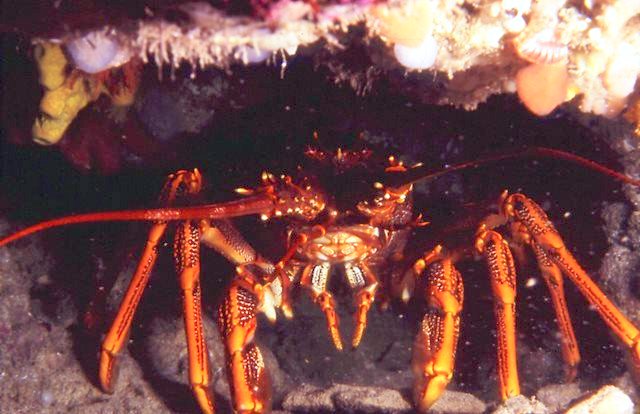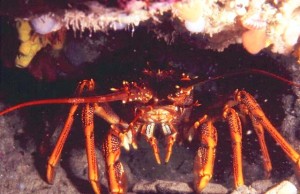The sanctuary zone at Margaret Brock Reef is the only place I’ve dived in SA where I’ve seen large numbers of huge rock lobsters (along with prolific juveniles and all between). Until then, I’d wrongly believed the (with hindsight, small to medium) lobsters (up to approx. 3-4 Kg with regard to the few we ate each Xmas!) that I and my various dive buddies were seeing everywhere else in SA were actually big, quite mature lobsters. We were in fact being ‘tricked’ into that incorrect mindset by the phenomenon commonly known as ‘the shifting baseline’. In other words, despite seeing many, many nice healthy lobsters in my four plus decades of mainly recreational diving right here in my home state of SA**,the only time I ever actually saw ‘pristine’ lobster terrain i.e. lobster habitat as it surely would have appeared very extensively in SA prior to European settlement (with the subsequent albeit historically much more recent development of our large-scale southern rock lobster commercial wild-catch fishery ,along with our recreational catch by divers using snares and boaties using licensed pots; the recreational take being significant but less well monitored and hence less accurately quantifiable for obvious reasons) was on those few gobsmackingly great dives we did at Margaret Brock Reef’s already extant and quite extensive southern rock lobster reserve! ** (Including along NW coast of Kangaroo Island as far back as 4 decades and totaling over a hundred dives in good terrain, and then in the Investigator Group as far back as 24 years – I’ve had three dive trips to that remote group, being in 1990, 2001 and 2006, and collectively that would be approximately another fifty dives, and all my dives are logged by the way – where even in 1990 [ship’s doctor on one of PIRSA/SARDI’s annual abalone surveys of that region] they were far fewer in number than I’d expected but were still nice healthy lobsters and generally easily found on almost every dive in suitable terrain.
Concluding message:
Even Dave Muirhead, who has done well over twelve hundred dives in SA marine waters, from Streaky Bay to Cape Jaffa, shallow and deep, rather smugly thought he could usually recognise the differences between pristine or near-pristine rocky reefs and those less so, BUT I WAS WRONG! The massive lobsters in that sanctuary via Cape Jaffa were on average more than twice the size of any of the thousands I’d seen till then! And thus it dawned on me that all the ‘big’ non-sanctuary zone lobsters I’d been seeing while diving throughout SA since age 16 years (and still do see, but less easy to find at all the ‘old fave’ near-shore haunts with each passing decade, e.g. we saw a single juvenile and no legal-sized lobsters on a 1 hour+ shore dive at Carrickalinga’s South Beach reef in November 2013) were in fact quite small and quite young in terms of this key commercial species’ natural lifecycle on genuinely pristine SA rocky reefs.
Large Southern Rock Lobster at Margaret Brock Reef
NB: Even the lobster per the image above was of much smaller size, (half at best in length and, as a wild guesstimate, probably barely a quarter in terms of weight) than the biggest one we saw at Margaret Brock Reef. That critter, my friend, was best described as a ‘scary monster’! But it either near the top end of a semi-cylindrical ‘waterspout’-type cave, chute or whatever) and, this being a very high wave energy dive site, we agreed it was too risky for us to enter for any attempt at a photograph, something that still irks me and probably will till my dying day!


